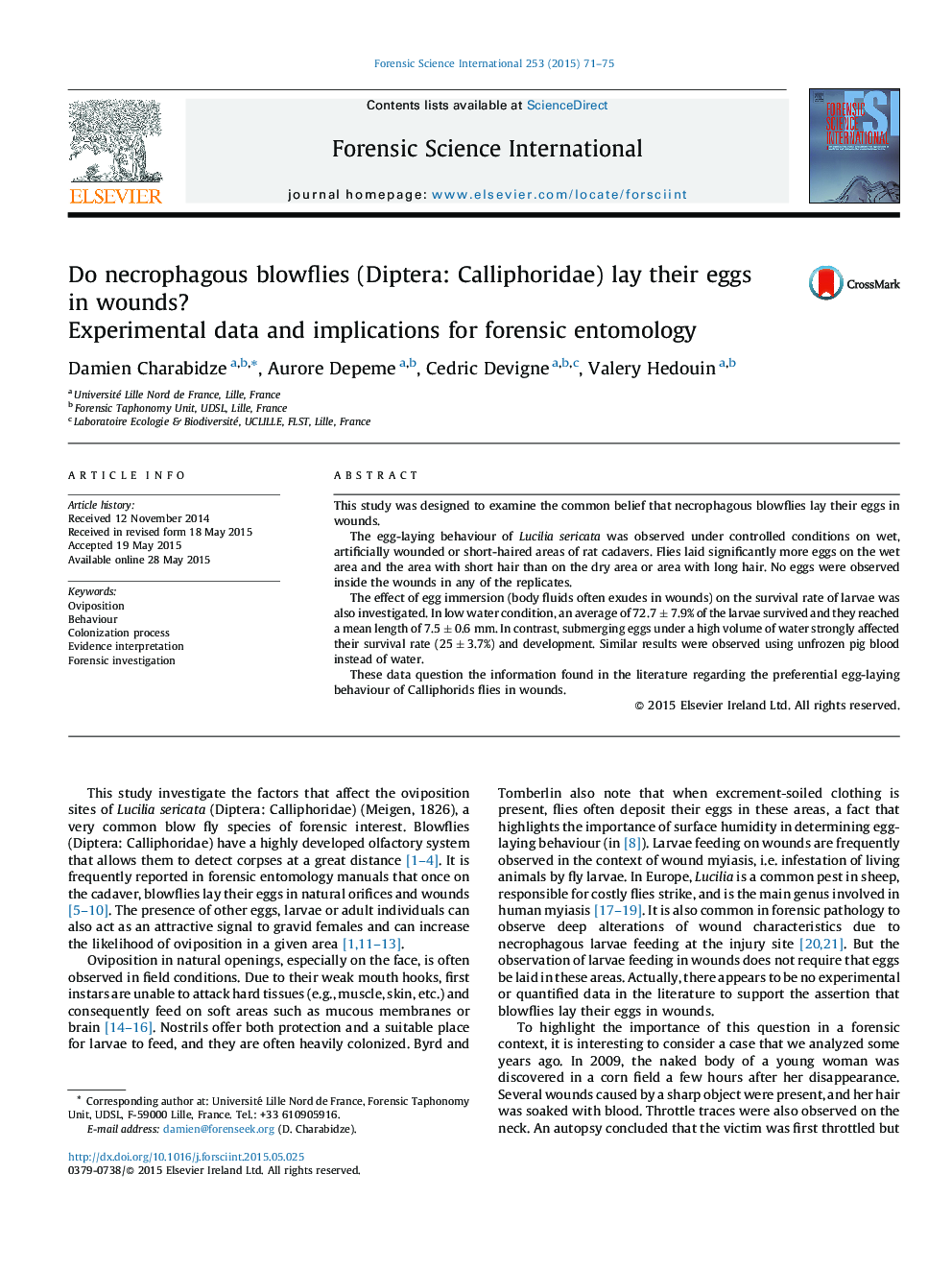| کد مقاله | کد نشریه | سال انتشار | مقاله انگلیسی | نسخه تمام متن |
|---|---|---|---|---|
| 95258 | 160423 | 2015 | 5 صفحه PDF | دانلود رایگان |
• Egg-laying behaviour was studied under controlled conditions on rat cadavers.
• No eggs were observed inside the wounds in any of the replicates.
• Flies laid more eggs on the wet and short hair areas than on control areas.
• Submerging eggs in liquid strongly affected their survival rate and development.
• These data question the literature assertion that “blowflies lay their eggs in wounds”.
This study was designed to examine the common belief that necrophagous blowflies lay their eggs in wounds.The egg-laying behaviour of Lucilia sericata was observed under controlled conditions on wet, artificially wounded or short-haired areas of rat cadavers. Flies laid significantly more eggs on the wet area and the area with short hair than on the dry area or area with long hair. No eggs were observed inside the wounds in any of the replicates.The effect of egg immersion (body fluids often exudes in wounds) on the survival rate of larvae was also investigated. In low water condition, an average of 72.7 ± 7.9% of the larvae survived and they reached a mean length of 7.5 ± 0.6 mm. In contrast, submerging eggs under a high volume of water strongly affected their survival rate (25 ± 3.7%) and development. Similar results were observed using unfrozen pig blood instead of water.These data question the information found in the literature regarding the preferential egg-laying behaviour of Calliphorids flies in wounds.
Journal: Forensic Science International - Volume 253, August 2015, Pages 71–75
